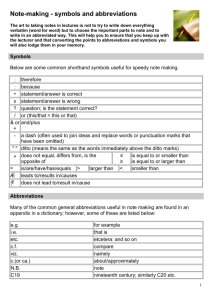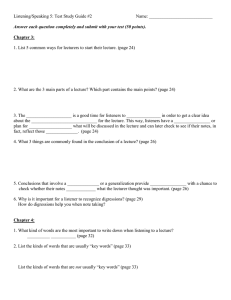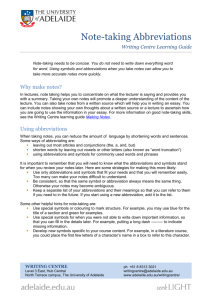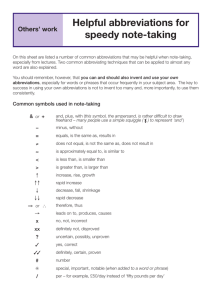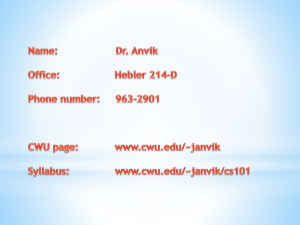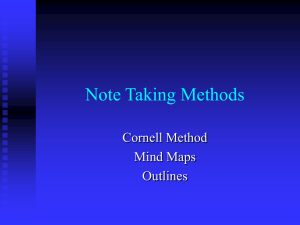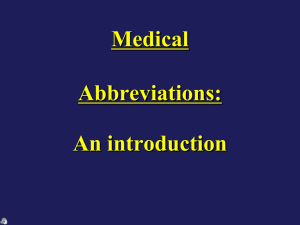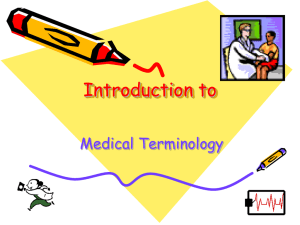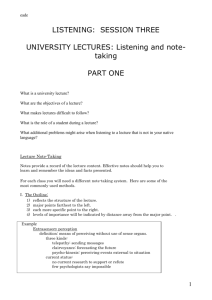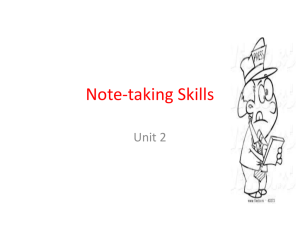The Use of Abbreviations and Symbols
advertisement
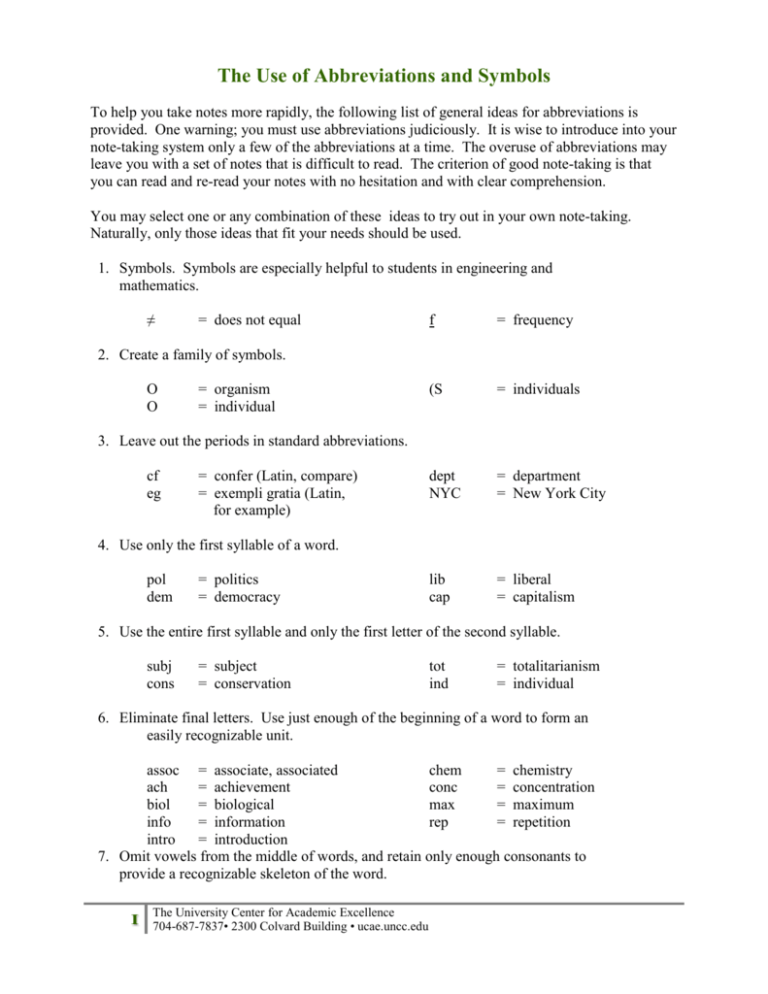
The Use of Abbreviations and Symbols To help you take notes more rapidly, the following list of general ideas for abbreviations is provided. One warning; you must use abbreviations judiciously. It is wise to introduce into your note-taking system only a few of the abbreviations at a time. The overuse of abbreviations may leave you with a set of notes that is difficult to read. The criterion of good note-taking is that you can read and re-read your notes with no hesitation and with clear comprehension. You may select one or any combination of these ideas to try out in your own note-taking. Naturally, only those ideas that fit your needs should be used. 1. Symbols. Symbols are especially helpful to students in engineering and mathematics. ≠ = does not equal f = frequency (S = individuals dept NYC = department = New York City lib cap = liberal = capitalism 2. Create a family of symbols. O O = organism = individual 3. Leave out the periods in standard abbreviations. cf eg = confer (Latin, compare) = exempli gratia (Latin, for example) 4. Use only the first syllable of a word. pol dem = politics = democracy 5. Use the entire first syllable and only the first letter of the second syllable. subj cons = subject = conservation tot ind = totalitarianism = individual 6. Eliminate final letters. Use just enough of the beginning of a word to form an easily recognizable unit. assoc = associate, associated chem = chemistry ach = achievement conc = concentration biol = biological max = maximum info = information rep = repetition intro = introduction 7. Omit vowels from the middle of words, and retain only enough consonants to provide a recognizable skeleton of the word. 1 The University Center for Academic Excellence 704-687-7837• 2300 Colvard Building • ucae.uncc.edu bkgd ppd prblm = background = prepared = problem chem gvt = chemistry = government cont’d = continued 8. Use an apostrophe. gov’t = government 9. Form the plural of the symbol word or abbreviated word by adding “s”. / /s = areas chaps = chapters co-ops = cooperatives fs /s = frequencies = ratios estg exptg = establishing = experimenting 10. Use “g” to represent “ing” endings. decrg ckg = decreasing = checking 11. Use a dot to represent rate. A dot placed over a symbol or a word indicates the word “rate”. . . | = vibrating rate f = frequency rate 12. Short words should generally be spelled out. Symbols, signs, or abbreviations for short words will make the notes too dense with “shorthand”. in at to key 13. Leave out unimportant verbs. went but for came be 14. Leave out “a” and “the”. 15. If a term, phrase, or name is initially written out in full during the lecture, initials can be substituted whenever the term, phrase, or name is used again. Initial writing: . . . and the effect of the Modern Massachusetts party will be felt . . . . . Subsequently : MMP 16. Use symbols for commonly recurring connective or transitional words. & vs 2 = and = against w/ = with w/o The University Center for Academic Excellence 704-687-7837• 2300 Colvard Building • ucae.uncc.edu = without
